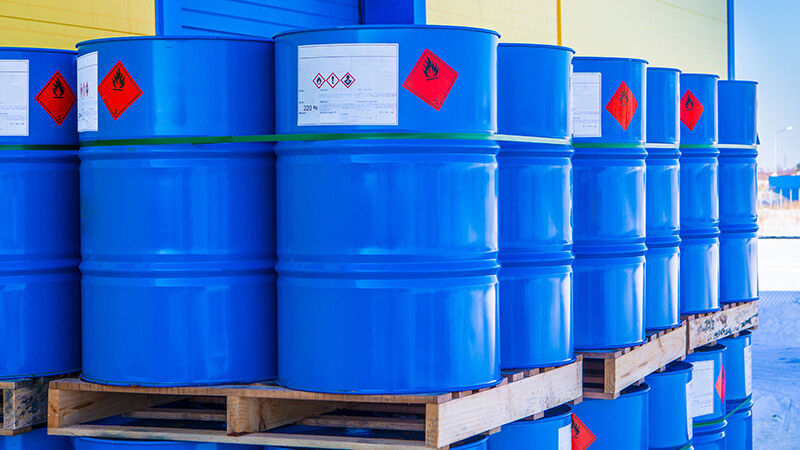It’s been more than twenty-five years since the Superfund Excise Tax was suspended, so when a new version went into effect on July 1, 2022, many companies were unsure whether the tax applied to them—or if it did, how they should calculate, report, and pay the taxes they suddenly owe in an accurate and timely manner, with the same or fewer resources as they had before.
What is the Superfund Excise Tax?
The revised Superfund Excise Tax, part of the Infrastructure and Investment Jobs Act, is a tax on the sale or use of “hazardous chemicals,” as well as the sale or use of certain imported “hazardous substances.” Internal Revenue Service (IRS) sections 4661 and 4671 currently list 42 chemicals and 151 “hazardous substances” as taxable.
The distinction between “chemicals” and “substances” here is that chemicals are raw materials taxable on their own, and substances are comprised of one or more taxable chemicals. For substances, however, the tax only applies to the company importing the hazardous substance, whereas for chemicals, the tax can apply to a manufacturer, producer, or importer. Oil companies should be aware, too, that Congress recently expanded the Superfund Excise Tax to include imported petroleum products and has increased the IRS’s budget by $80 billion, to generate approximately $200 billion in revenue, helping boost the agency’s enforcement and technology capabilities.
Find out how organizations are responding to the reinstated and expanded Superfund Excise Tax in our free on-demand webinar
Automation and the Superfund Excise Tax
While it is technically correct to say that the Superfund Excise tax has existed before and is merely being reinstated, the fact of the matter is that the tax was suspended in 1995, so most companies have little or no institutional memory of it. Companies that did not exist in 1995 certainly don’t—and the systems, processes, and technologies for managing the data required to calculate these taxes are likely not streamlined to effectively manage it today, either for sale, use, or import. In addition, The Superfund Excise Tax is impacting a much larger group of companies since the threshold was lowered from 50% down to 20%, on taxable hazardous substances, and in many cases, the rates have doubled.
Fortunately, a generation’s worth of technological advances has provided companies with the means to manage Superfund taxes more easily than one might think. Though some of the Superfund tax provisions are complicated enough to require personal attention—at least initially—most of the tax requirements and calculations are excellent candidates for automation, enabling companies that owe more than $2,500 annually to meet their bi-monthly payment schedule on a timely basis. For companies that import and/or manufacture dozens or hundreds of products containing taxable chemicals or substances, the sheer volume of calculations cries out for an automated solution. Otherwise, IT, Finance, and Tax personnel will have to create a series of manual procedures to gather data for compliance, calculate the tax owed, respond to audit inquiries, and constantly monitor the IRS’s lists for any changes that might apply. And to do all of this, more personnel may even be required.
An automated solution—particularly one designed to meet the volumetric-based calculation requirements and include all necessary rules and rates—would address most of these potential headaches. Yes, companies that use, manufacture, or sell products that contain taxable chemicals or substances will have to conduct a thorough supply-chain analysis to determine when and where the tax applies to them—but that’s true regardless of how a company chooses to manage its Superfund obligations. However, once such analysis has been conducted and a master data set of the company’s products, transactions, and manufacturing processes has been established, the repeatable and largely predictable nature of corporate import and production activities means Superfund tax calculations and payments can be easily automated with the right solution.
Many options – One good solution
Another benefit of automating the Superfund tax process is that it gives companies the most up-to-date tax rates available under the IRS’s rules, and it helps avoid costly penalties. For example, the IRS gives companies three options to calculate their Superfund tax obligation for imported hazardous substances:
- Use default rates determined by IRS.
2. Self-assess the rate based on 10% of the appraisal value of the imported substances.
3. Calculate the rate based on the percentage amount of each listed chemical included in the substance. (Note: By definition, all listed “substances” contain at least 20% of one or more listed “chemicals.”)
The first two options exist for companies that elect not to use Option 3, which involves determining the percentages of listed chemicals contained in the imported substance and multiplying those percentages by the listed cost per ton to determine the tax owed on that particular substance.
Now, some companies may prefer to avoid the sort of detailed product and process analysis necessary to gather the data needed for Option 3, but the reward for companies that make the effort—and employ automation to make the most efficient possible use of that data—is that they will almost always pay lower, more accurate, taxes. Furthermore, the savings from those lower tax rates will accumulate over time, especially for larger companies with a substantial Superfund tax burden.
Superfund Excise Tax solution attributes:
Companies considering an automated third-party solution to handle Superfund taxes should look for a solution with these capabilities:
• Fast, error-free calculations with unit-of-measure conversions
• Batch processing for high-volume import activities
• Real-time calculations for sale orders/invoices
• Ability to integrate with existing technological ecosystems
• Automated content updates (e.g. changes to tax rates, chemical/substance lists)
• Built-in exemption credit and certificate management
• Ability to access and analyze compliance and transaction data
• Ability to analyze future tax implications of chemicals/substances (i.e. scenario modeling)
• Robust reporting capabilities
• Required data at your fingertips when responding to IRS inquiries.
For more information or a demo of how ONESOURCE Determination can help companies manage the Superfund Excise Tax, click here: Superfund Excise Tax Calculation | Thomson Reuters ONESOURCE











